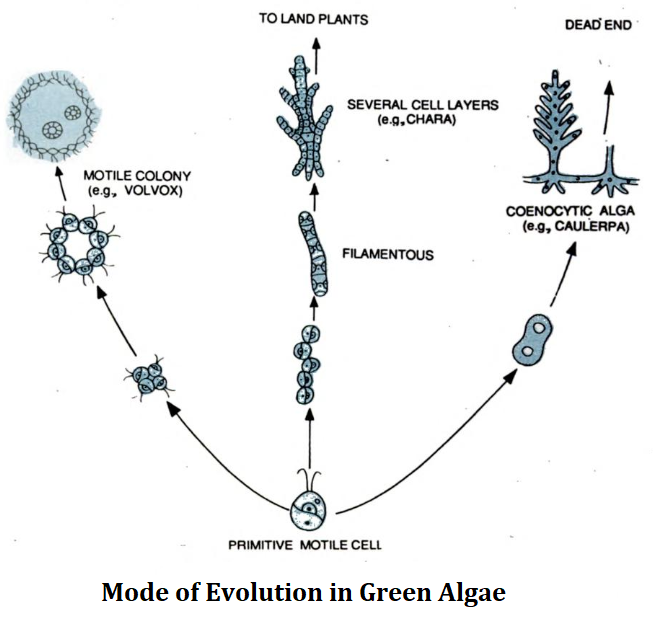Evolution of Thallus in Green Algae:
It appears that various forms of green algae have evolved from unicellular motile or flagellated forms. The unicellular forms of algae have been included in the plant kingdom and not in protista because of the following reasons.
(1) Evolutionary continuity between the development of various groups of green algae from the unicellular forms.
(2) Development of land plants from the green algae.

There are three different types of tendencies along which the different groups of algae might have evolved in nature. These are:
(1) Volvocine Line- According to this theory, there is progressive evolution of unicellular types in the direction of the motile colony like Volvox. The series starts with Gonium having 4-16 cells and passes through Pandorina (16-32 celled), Eudorina (16-64 celled) to Volvox having 500-60,000 cells. The line ends abruptly at Volvox because the retention of motility is a limitation to further increase in size.
(2) Tetrasporine Line- The vegetative phase loses flagella and the cells become non-motile. However, the motility is often retained in the reproductive phase. The non-motile cells retained the power to divide. They continued to divide and formed non-motile colonies (for example- Palmella and Tetraspora). Division in a single plane gave rise to simple unbranched filamentous forms like Ulothrix. The filamentous form evolved to form a branched filament, the heterotrichous filament with separate upright and prostrate branches as in Stigoclonium, and parenchymatous sheet-like thallus as in Ulva to several layered body as in Chara. Land plants seem to have evolved from green algae with Chara-like or heterotrichous thallus.
(3) Chlorococcine or Coccoid Line- In this line, the vegetative phase is non-motile due to the loss of flagella by the motile cells. Nuclear divisions continue without wall formation. This results in a coenocytic thallus, for example- Caulerpa.









Comments (No)